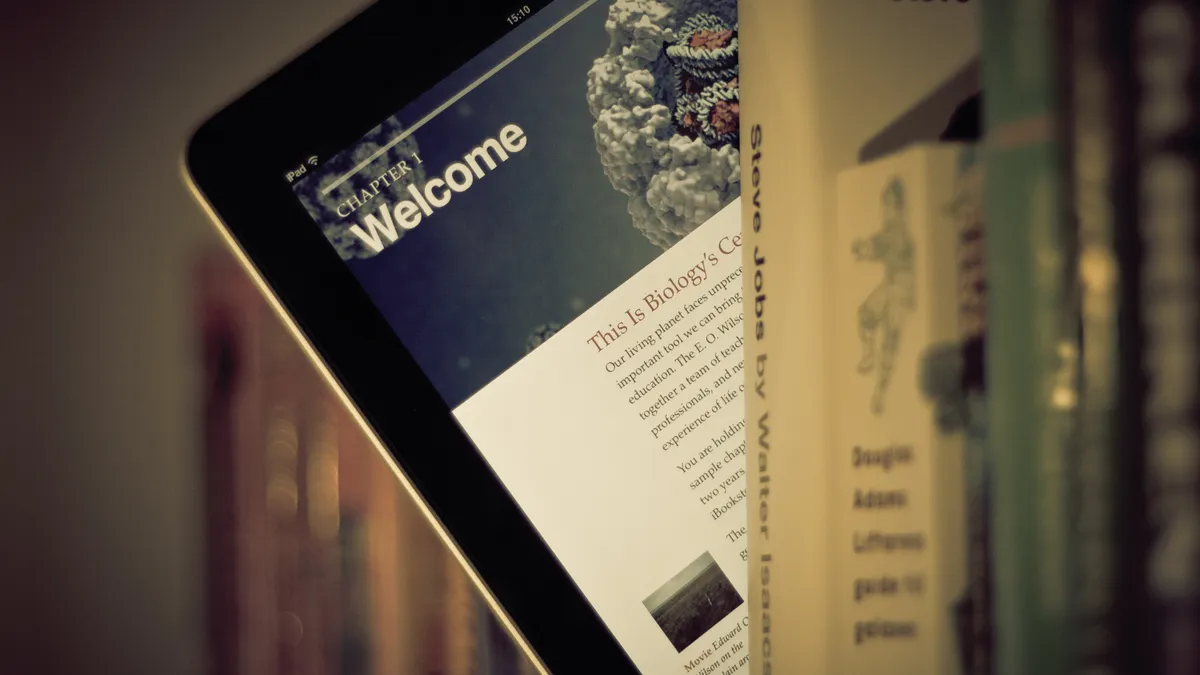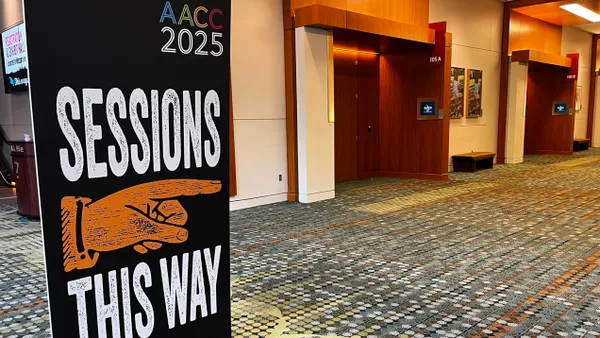Dive Brief:
- Colleges can use open educational resources, or OER, to meet their diversity, equity and inclusion goals, according to a report released Thursday by the American Association of Colleges and Universities.
- Students engage more when they are able to see people who share their backgrounds represented in course materials, the report said. OER — resources that are either in the public domain or have been licensed to allow people to rework and share them freely — allow educators to individualize materials they use in the classroom.
- The report is meant to act as a guidebook for institutions interested in making their coursework more inclusive and diversifying the sources from which students learn, AAC&U said.
Dive Insight:
Textbooks and other education resources can be prohibitively expensive, putting students who can't afford them at a disadvantage. But courses that use OER address affordability concerns head on, thus bringing more equity to higher education, the report said.
Delaware State University, a historically Black and minority-serving institution, serves as a strong case study of this, according to the report. The university created guides for its students on where to find open source textbooks and gives out grant awards to faculty who successfully adopted OER in their teaching.
"We see this as an equity and a social justice issue,” the university's campus action plan said. "Many of our students struggle to afford the textbooks and often delay purchasing the required course materials."
But many colleges often miss out on the chance to frame cost-savings measures for students as a DEI issue, the report said. AAC&U recommends colleges create a communication campaign to increase faculty and administrator awareness of textbook costs and tie open educational resources directly to their broader DEI efforts.
Researchers developed the recommendations based on data collected from July 2021 to July 2022 through AAC&U’s Institute on Open Educational Resources, which runs year-long programs for colleges and systems looking to launch or expand OER initiatives.
OER can also help address underrepresentation in academia, according to the report. Open resources can be updated to include previously unheard perspectives, allowing marginalized groups to speak for themselves and tell their own histories.
One example of institutions using OER to create culturally relevant learning materials is the program Remixing Open Textbooks Through an Equity Lens.
The partnership between six public colleges in Massachusetts and the state's higher ed department redevelops open textbooks for general education courses with underrepresented students in mind. Faculty receive training and funding through a $1.3 million grant from the U.S. Department of Education under the Open Textbooks PIlot Program.
It's not just faculty that colleges can call upon to do this work. Student groups can contribute by acting as anti-bias readers for OER course materials and also creating their own open educational resources, the report said. They can also petition their institutions to prioritize free resources.
However, a heavy reliance on digital materials, as many OER are, can exacerbate other DEI challenges, according to the report. A 2022 working paper found undergraduate students experience inequitable access to broadband internet based on their race and location.
Colleges should evaluate if their students have equitable access to both the internet and internet-connected technology, the report said. And they should consider providing services like digital literacy training and multilingual technical support, even outside of standard business hours if possible, AAC&U suggested.
Considerations should also be made for students who need hard copies of course materials, including those with learning challenges and incarcerated students, the report said. Collaborations with campus libraries, bookstores, printing services and student disability offices can support the creation and distribution of physical open educational resources.













